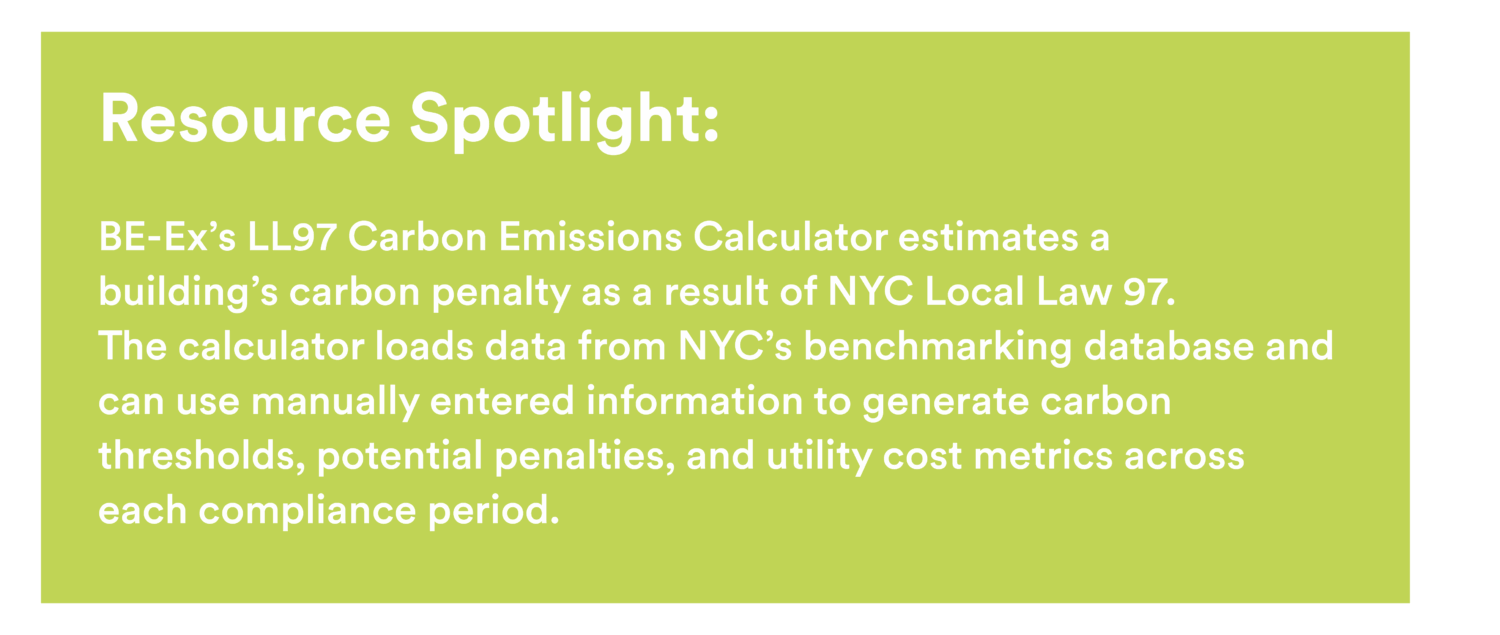Turning Capital Planning into Carbon Strategy: 10 Steps for LL97 Readiness
by Nell Jacobson, featuring insights from Senior Director of Engineering Amalia Cuadra, PE
Why Capital Planning Matters More Than Ever
At its core, capital planning is about preparation. It’s the process of forecasting large-scale investments needed to keep a building properly functioning—from boilers and chillers to roofs and windows. A successful capital plan doesn’t just account for what needs replacing today; it anticipates what’s coming five, ten, or even twenty years down the line. It maps out what to do, when to do it, and how to fund it.
Historically, capital planning focused on reliability, lifecycle costs, and comfort. But today, in cities like New York, the stakes are higher. With the implementation of Local Law 97 (LL97), building’s carbon emissions are now a compliance metric—backed by penalties that can dramatically affect a building’s bottom line, if it is noncompliance. Capital planning is no longer just about maintaining infrastructure; it’s about managing carbon.
Amalia Cuadra, Senior Director of Engineering at EN-POWER GROUP and a capital planning expert with more than 15 years of experience, puts it simply: “You can’t develop a capital plan today without factoring in emissions, decarbonization, and how your investments will perform under LL97.” In short, capital planning has evolved into a strategic tool for compliance, sustainability, and cost control.
So, what should building decision-makers be doing now to align their capital plans with LL97? Below are ten essential considerations to keep your plan informed, adaptive, and ready for the road ahead.

1. Start with Reliable Energy and Emissions Data
A solid capital plan starts with knowing your numbers. In this case, that means accurate energy consumption, costs, and a verified carbon emissions profile. Without a clear baseline, it’s impossible to forecast where the penalties—and opportunities—lie.
2. Understand Your Emissions Limits
Your building’s carbon budget under LL97 is based on its gross floor area and occupancy classification. Misjudging your square footage could lead to misaligned expectations and worse—unexpected fines.
3. Assess Penalty Exposure Over Time
LL97 compliance isn’t a one-time event—it’s a five-cycle marathon, with emissions limits tightening every five years from now till 2050. Forecast at which milestones your building is likely to incur penalties and use that timeline to shape investment priorities.
 Learn more: https://be-exchange.org/ll97-calculator/
Learn more: https://be-exchange.org/ll97-calculator/
4. Inventory Your Equipment and Its Useful Life
What equipment do you have? How much energy does it use? When is it due for replacement? These are key questions that inform long-term capital planning and help align equipment upgrades with decarbonization timelines.
5. Engage the Right Engineering Partner Early
Upfront planning benefits from technical expertise. A knowledgeable engineering team or energy expert can model building performance, design decarbonization pathways, and help you identify hidden opportunities for savings and compliance.
6. Evaluate Your Replacement Options
When equipment reaches end-of-life, decision-makers face three paths: repair, replace, or upgrade to decarbonize and reduce energy costs. Capital plans should evaluate all three—and consider how each option affects emissions, operations, and compliance.
7. Sequence Retrofit Projects with a Strategic Timeline
Once you’ve identified necessary upgrades and potential exposure to fines, build a phased schedule. Coordinating replacements (especially electrification-ready systems) over time can help control disruption and align upgrades with funding opportunities and incentive programs.
8. Leverage Incentives to Accelerate Upgrades
Government and utility incentives can offset costs and accelerate your capital timeline. The Inflation Reduction Act, Clean Heat or other NYSERDA programs, and utility rebates are all worth investigating as you plan your decarbonization roadmap.
9. Plan for Verification and Reassessment
Design is only the beginning. Once upgrades are complete, systems must be commissioned, operated efficiently, and tracked to confirm actual energy savings and emissions reductions. Utilize building management systems or other platforms to help track performance over time.
10. Treat Capital Planning as a Living Process
A capital plan isn’t a static spreadsheet—it’s a working document that should adapt over time. Regulatory landscapes evolve, incentives change, and building needs shift. Expect to revisit and revise your plan regularly to stay on track.
FINAL THOUGHTS: This Is a Marathon, Not a Sprint
As Amalia puts it, “A good capital plan outlines what to do next year, in five years, and even twenty years from now—but it should never be set in stone.” LL97 has fundamentally reshaped the landscape for building decision-makers, and smart capital planning is now a cornerstone of regulatory and financial success. The key is to start early, build flexibility into your plan, and never stop evaluating what’s next.
About EN-POWER GROUP
Navigating LL97 compliance starts with a clear, informed capital plan. EN-POWER GROUP’s team of multidisciplinary engineers, energy experts, and compliance specialists brings deep technical knowledge and real-world project experience to capital planning —ensuring buildings stay compliant, efficient, and resilient for the future.
With over 20 years of proven leadership in energy efficiency, and experts like Amalia Cuadra who have advised on the development of LL97 at the government level, EN-POWER GROUP is uniquely positioned to guide teams through today’s regulatory landscape—and tomorrow’s.
To find out more about EN-POWER GROUP, including their services and dedicated team of experts, visit: https://enpg.com.